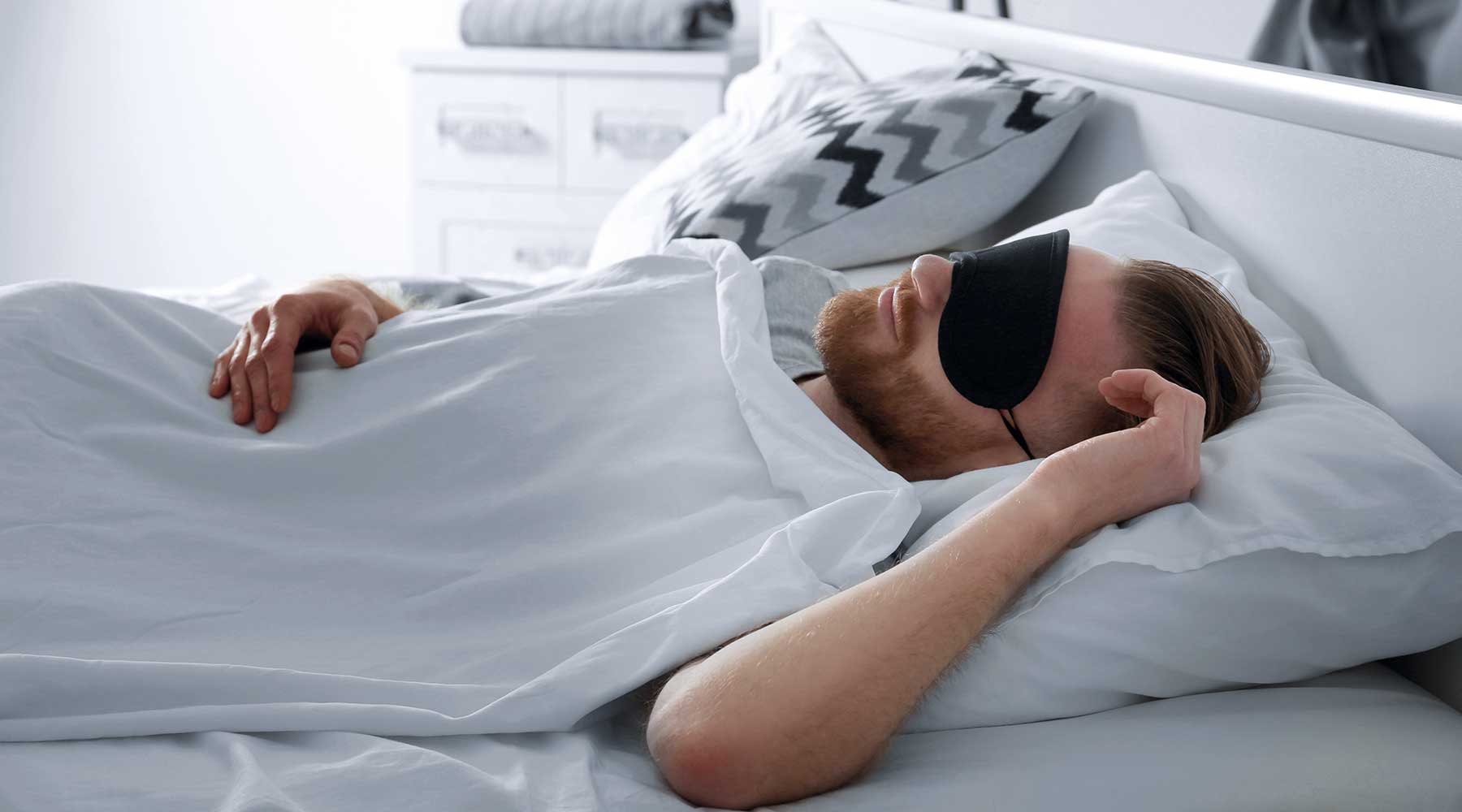
Polyphasic sleep - how does it work?
Sleeping several times a day and only a few hours at night? We explain what's behind the trend toward polyphasic sleep and whether intermittent sleep is truly beneficial for health and performance.
Table of contents
- Sleep patterns at a glance
- Monophasic sleep
- Biphasic sleep
- Polyphasic sleep
- How does polyphasic sleep work?
- How healthy is polyphasic sleep?
- Which sleep pattern is best?
- Conclusion
We're normally awake during the day and asleep at night. However, some people swear by dividing their sleep into several short sleep intervals and integrating them into their daily routine according to a specific pattern. Intermittent sleep is said to increase performance and energy levels and has therefore become particularly popular among (competitive) athletes.
Sleep patterns at a glance
Over the course of our lives, our sleeping habits change naturally. Infants and toddlers need a lot of sleep and it is quite normal for them to sleep again and again during the day. With age Sleep patterns then increasingly adapt to the natural day-night rhythm. Daylight acts as a natural cue for our internal clock, which controls numerous biological processes in our body, our metabolism, and our sleep-wake cycle. Sleep is then increasingly shifted to the night and no longer occurs in many short sleep intervals, but rather in one long sleep interval. This so-called monophasic sleep is the most common sleep pattern today.

Monophasic sleep
Monophasic sleep corresponds to the natural sleep pattern of adults and consists of a waking phase of approximately 16 hours and a nighttime sleep phase that lasts an average of 8 hours.
Biphasic sleep
In addition to a slightly shortened night sleep phase (approx. 6 hours), a short nap or a Power Nap in the afternoon. Sleep is thus divided into a longer and a shorter interval.
Polyphasic sleep
In polyphasic sleep, sleep is divided into several short sleep phases, which can also shorten the total sleep duration. There are various methods for this, some of which completely eliminate a longer nighttime sleep phase and divide sleep into, for example, six approximately 20-minute or five 90-minute sleep intervals. This also reduces the total sleep duration, which in extreme sleep patterns can be as little as 2 hours per day/night. Well-known methods include Everyman, Überman, and Dymaxion sleep.
How does polyphasic sleep work?
Polyphasic sleep is intended to reduce total sleep time so that waking hours can be extended and used more productively. The goal of these short sleep periods is to guide the body through a sleep cycle during naps, which is intended to increase concentration and performance.
So you go to sleep at certain times several times a day and set an alarm to get up again at the specified time. You should stick to the specified sleep windows of your respective sleep pattern, avoid coffee and alcohol and expect a transition or adjustment period of up to 3 weeks.
How healthy is polyphasic sleep?
Our natural need for sleep is usually between 7 and 8 hours of sleep, which, according to our biological rhythm, occurs mostly at night. The fact that sleep occurs in a single, long sleep period is also related to our sleep structure. While we sleep, we go through several sleep cycles, which in turn are divided into a specific sequence of light, deep, and REM sleep phases. As the night progresses, the initially high proportion of deep sleep decreases, and we spend increasing amounts of time in REM sleep. For the regeneration and performance of body and mind, it is important to spend enough time in deep sleep. and REM sleep and also that the Sleep phases take place in their natural sequence.
Many polyphasic sleep patterns lack sufficient deep sleep and continuous sleep cycles. This, however, is essential for numerous regenerative processes and crucial for healthy bodily function. Various experts also believe that the extremely limited sleep intervals during the day are too short for sufficient regeneration and do not achieve the desired effect.
In addition, we humans are not actually nocturnal, and in addition to our sleep patterns, numerous other biological processes are oriented towards a circadian rhythm, i.e., the day-night or light-dark rhythm. When the sleep window is drastically reduced during intermittent sleep and sleep phases are scheduled during the day, our entire biorhythm is disrupted, and the body cannot regenerate naturally. We suffer from sleep deprivation and become tired, lose energy and performance, and harm our health in the long term. The risk of sleep disorders, Cardiovascular diseases, depression and other illnesses are increasing.
Intermittent sleep also changes the daily structure and is difficult to implement in today's social and societal environment. You need a suitable place to sleep every few hours and have to stick to set sleep windows.
A polyphasic sleep pattern is rather unsuitable for everyday use and should only be used in exceptional cases when nighttime sleep needs to be reduced during particular performance phases and is less than 6 hours, for example in the case of competitive athletes.
Which sleep pattern is best?
Experts generally recommend a mono- or biphasic sleep pattern, as this most closely corresponds to the natural, biological rhythm of our body. In many cultures, a second, short sleep phase in the afternoon has already been established – the classic midday nap or the famous Spanish siesta. It is scientifically proven that a Power Nap With a maximum duration of 30 minutes, it can help overcome daytime fatigue in the short term and increase performance. Ultimately, however, it always depends on your personal sleep needs and on listening to your own sleep needs.
Conclusion
-
Monophasic sleep is the most common sleep pattern, consisting of a long waking phase and a nighttime sleep phase.
-
Biphasic sleep includes a nighttime sleep phase and a short sleep interval during the night.
-
Polyphasic sleep occurs in many short sleep windows spread throughout the day and is said to increase energy and performance while shortening the total sleep duration and lengthening the waking phase.
-
Intermittent sleeping does not correspond to the natural human sleep rhythm and is only recommended in special exceptions.
Best wishes and see you soon!



Leave a comment
This site is protected by hCaptcha and the hCaptcha Privacy Policy and Terms of Service apply.